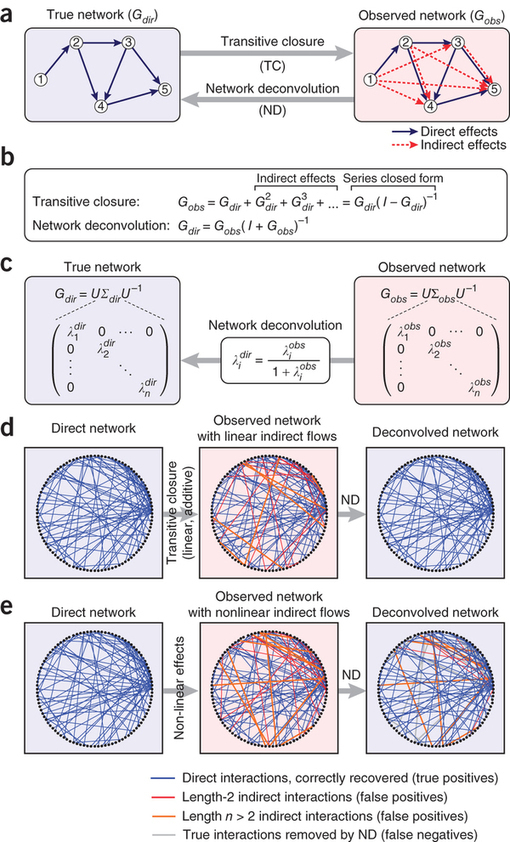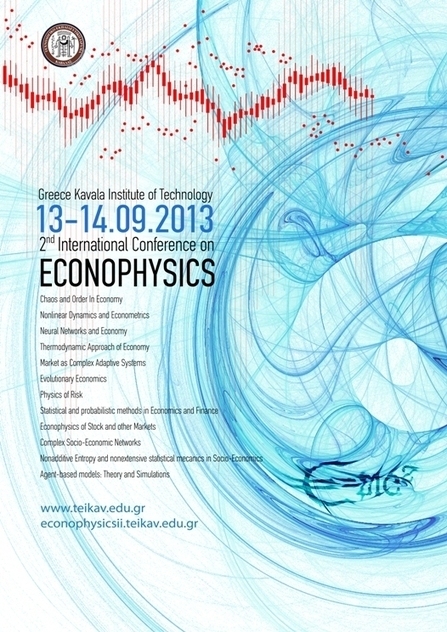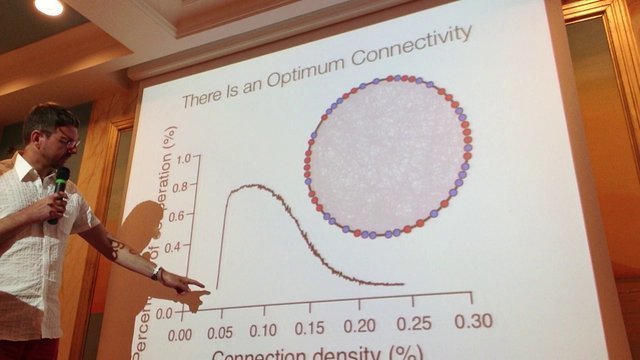Data-sharing: Everything on display

Some communities have agreed to share online — geneticists, for example, post DNA sequences at the GenBank repository, and astronomers are accustomed to accessing images of galaxies and stars from, say, the Sloan Digital Sky Survey, a telescope that has observed some 500 million objects — but these remain the exception, not the rule. Historically, scientists have objected to sharing for many reasons: it is a lot of work; until recently, good databases did not exist; grant funders were not pushing for sharing; it has been difficult to agree on standards for formatting data and the contextual information called metadata; and there is no agreed way to assign credit for data.
But the barriers are disappearing, in part because journals and funding agencies worldwide are encouraging scientists to make their data public.
Data-sharing: Everything on display
Richard Van Noorden
Nature 500, 243–245 (08 August 2013)
http://dx.doi.org/10.1038/nj7461-243a




Is There Social RNA?
Our understanding of the forms, functions, and movement of RNA continues to expand. Not only can RNA control gene expression by multiple mechanisms within a cell, it appears to travel outside the cell within an organism as well. This raises the interesting question of whether the RNA world extends beyond the boundaries of the organism. Can RNA traffic integrate an organism into its environment—is there “social RNA”? Examining the mechanism of RNA interference (RNAi) may be a good route for seeking the answer.
Is There Social RNA?
Peter Sarkies, Eric A. Miska
Science 2 August 2013:
Vol. 341 no. 6145 pp. 467-468
http://dx.doi.org/10.1126/science.1243175




Bibliometric Evidence for a Hierarchy of the Sciences
The hypothesis of a Hierarchy of the Sciences, first formulated in the 19th century, predicts that, moving from simple and general phenomena (e.g. particle dynamics) to complex and particular (e.g. human behaviour), researchers lose ability to reach theoretical and methodological consensus. This hypothesis places each field of research along a continuum of complexity and “softness”, with profound implications for our understanding of scientific knowledge. Today, however, the idea is still unproven and philosophically overlooked, too often confused with simplistic dichotomies that contrast natural and social sciences, or science and the humanities. Empirical tests of the hypothesis have usually compared few fields and this, combined with other limitations, makes their results contradictory and inconclusive. We verified whether discipline characteristics reflect a hierarchy, a dichotomy or neither, by sampling nearly 29,000 papers published contemporaneously in 12 disciplines and measuring a set of parameters hypothesised to reflect theoretical and methodological consensus. The biological sciences had in most cases intermediate values between the physical and the social, with bio-molecular disciplines appearing harder than zoology, botany or ecology. In multivariable analyses, most of these parameters were independent predictors of the hierarchy, even when mathematics and the humanities were included. These results support a “gradualist” view of scientific knowledge, suggesting that the Hierarchy of the Sciences provides the best rational framework to understand disciplines' diversity. A deeper grasp of the relationship between subject matter's complexity and consensus could have profound implications for how we interpret, publish, popularize and administer scientific research.
Fanelli D, Glänzel W (2013) Bibliometric Evidence for a Hierarchy of the Sciences. PLoS ONE 8(6): e66938.
http://dx.doi.org/10.1371/journal.pone.0066938




Designing living matter. Can we do better than evolution?
Thanks to substantial improvements in the theory of metabolic fluxes and the application of 13C isotope markers in experimental flux studies, Pareto efficiency of bacterial metabolism can now be determined and direct answers to the long standing questions of optimization according to multiple criteria in nature can be given. Cells or organisms operate close to Pareto optima but the performance with respect to every single criterion is almost always improvable. Rational design and evolutionary methods are routinely used for the production of biomolecules with optimized properties. Examples are proteins for technical applications, for example in detergents, and optimally binding nucleic acid molecules called aptamers. Among the various perspectives of synthetic biology, the usage of DNA for information storage is particularly promising: In a pilot experiment, an entire book including figures and a Java script, in total more than 5 megabit, were stored on a single DNA molecule.
Schuster, P. (2013), Designing living matter. Can we do better than evolution?. Complexity, 18: 21–33.
http://dx.doi.org/10.1002/cplx.21461




PLOS ONE: Are All Placebo Effects Equal? Placebo Pills, Sham Acupuncture, Cue Conditioning and Their Association
Placebo treatments and healing rituals have been used to treat pain throughout history. The present within-subject crossover study examines the variability in individual responses to placebo treatment with verbal suggestion and visual cue conditioning by investigating whether responses to different types of placebo treatment, as well as conditioning responses, correlate with one another. Secondarily, this study also examines whether responses to sham acupuncture correlate with responses to genuine acupuncture. Healthy subjects were recruited to participate in two sequential experiments. Experiment one is a five-session crossover study. In each session, subjects received one of four treatments: placebo pills (described as Tylenol), sham acupuncture, genuine acupuncture, or no treatment rest control condition. Before and after each treatment, paired with a verbal suggestion of positive effect, each subject's pain threshold, pain tolerance, and pain ratings to calibrated heat pain were measured. At least 14 days after completing experiment one, all subjects were invited to participate in experiment two, during which their analgesic responses to conditioned visual cues were tested. Forty-eight healthy subjects completed experiment one, and 45 completed experiment two. The results showed significantly different effects of genuine acupuncture, placebo pill and rest control on pain threshold. There was no significant association between placebo pills, sham acupuncture and cue conditioning effects, indicating that individuals may respond to unique healing rituals in different ways. This outcome suggests that placebo response may be a complex behavioral phenomenon that has properties that comprise a state, rather than a trait characteristic. This could explain the difficulty of detecting a signature for “placebo responders.” However, a significant association was found between the genuine and sham acupuncture treatments, implying that the non-specific effects of acupuncture may contribute to the analgesic effect observed in genuine acupuncture analgesia.
Kong J, Spaeth R, Cook A, Kirsch I, Claggett B, et al. (2013) Are All Placebo Effects Equal? Placebo Pills, Sham Acupuncture, Cue Conditioning and Their Association. PLoS ONE 8(7): e67485.
http://dx.doi.org/10.1371/journal.pone.0067485




Network deconvolution as a general method to distinguish direct dependencies in networks

Recognizing direct relationships between variables connected in a network is a pervasive problem in biological, social and information sciences as correlation-based networks contain numerous indirect relationships. Here we present a general method for inferring direct effects from an observed correlation matrix containing both direct and indirect effects. We formulate the problem as the inverse of network convolution, and introduce an algorithm that removes the combined effect of all indirect paths of arbitrary length in a closed-form solution by exploiting eigen-decomposition and infinite-series sums. We demonstrate the effectiveness of our approach in several network applications: distinguishing direct targets in gene expression regulatory networks; recognizing directly interacting amino-acid residues for protein structure prediction from sequence alignments; and distinguishing strong collaborations in co-authorship social networks using connectivity information alone. In addition to its theoretical impact as a foundational graph theoretic tool, our results suggest network deconvolution is widely applicable for computing direct dependencies in network science across diverse disciplines.
Network deconvolution as a general method to distinguish direct dependencies in networks
Soheil Feizi, Daniel Marbach, Muriel Médard & Manolis Kellis
Nature Biotechnology 31, 726–733 (2013)
http://dx.doi.org/10.1038/nbt.2635




Generating functionals for guided self-organization
Time evolution equations for dynamical systems can often be derived from generating functionals. Examples are Newton's equations of motion in classical dynamics which can be generated within the Lagrange or the Hamiltonian formalism. We propose that generating functionals for self-organizing complex systems offer several advantages. Generating functionals allow to formulate complex dynamical systems systematically and the results obtained are typically valid for classes of complex systems, as defined by the type of their respective generating functionals. The generated dynamical systems tend, in addition, to be minimal, containing only few free and undetermined parameters. We point out that two or more generating functionals may be used to define a complex system and that multiple generating function may not, and should not, be combined into a single overall objective function. We provide and discuss examples in terms of adapting neural networks.
Generating functionals for guided self-organization
Claudius Gros
http://arxiv.org/abs/1307.7872




Power Laws and Fragility in Flow Networks
What makes economic and ecological networks so unlike other highly skewed networks in their tendency toward turbulence and collapse? Here, we explore the consequences of a defining feature of these networks: their nodes are tied together by flow. We show that flow networks tend to the power law degree distribution (PLDD) due to a self-reinforcing process involving position within the global network structure, and thus present the first random graph model for PLDDs that does not depend on a rich-get-richer function of nodal degree. We also show that in contrast to non-flow networks, PLDD flow networks are dramatically more vulnerable to catastrophic failure than non-PLDD flow networks, a finding with potential explanatory power in our age of resource- and financial-interdependence and turbulence.
Power Laws and Fragility in Flow Networks
Jesse Shore, Catherine J. Chu, Matt T. Bianchi
http://arxiv.org/abs/1308.0726




OKCon - Open Knowledge Conference Geneva 201 16th-18th September
EVENT: Open Knowledge Conference-: Geneva 2013
16th-18th September
http://okcon.org/
About OKCon 2013
The Open Knowledge Foundation is delighted to invite you to the 2013 Open Knowledge Conference (OKCon) in Geneva, Switzerland on 16th-18th September. OKCon is the world’s leading open data and open knowledge conference, running since 2005.
Our line-up of speakers this year already includes Ellen Miller (Sunlight Foundation), John Ellis (CERN and Kings College, London), Chris Vein (World Bank) and Victoria Stodden (Columbia University). Many more will be announced very soon.
Our theme for OKCon 2013 is OPEN DATA – Broad, Deep Connected. In the last few years we have seen government open data initiatives grow and become important in areas such as research, culture and international development. OKCon will explore how open data is not only expanding geographically but also touching new sectors and new areas. It will focus on how we can coordinate and strengthen public policy around the world to support a truly global and interconnected ecosystem of open data.




Complementarity in biological systems: A complexity view
Niels Bohr and Max Delbruck believed that complementarity—such as wave–particle duality—was not limited to the quantum realm, but had correlates in the study of living things. Biological complementarity would indicate that no single technique or perspective allows comprehensive viewing of all of a biological entity's complete qualities and behaviors; instead, complementary perspectives, necessarily and irrevocably excluding all others at the moment an experimental approach is selected, would be necessary to understand the whole. Systems biology and complexity theory reveal that, as in the quantum realm, experimental observations themselves limit our capacity to understand a biological system completely because of scale-dependent “horizons of knowledge,” a form of biological complementarity as predicted by Bohr and Delbruck. Specifically, observational selection is inherently, irreducibly coupled to observed biological systems as in the quantum realm. These nested systems, beginning with biomolecules in aqueous solution all the way up to the global ecosystem itself, are understood as a seamless whole operating simultaneously and complementarily at various levels. This selection of an observational stance is inseparable from descriptions of biology indicates—in accordance with views of thinkers such as von Neumann, Wigner, and Stapp—that even at levels of scale governed by classical physics, at biological scales, observational choice remains inextricably woven into the establishment, in the observational moment, of the present conditions of existence. These conceptual shifts will not only have theoretical impact, but may point the way to new, successful therapeutic interventions, medically (at the scale of organisms) or environmentally/economically (at a global scale).
Theise, N. D. and Kafatos, M. C. (2013), Complementarity in biological systems: A complexity view. Complexity, 18: 11–20.
http://dx.doi.org/10.1002/cplx.21453




Coolhunting for the World's Thought Leaders
Which thinkers are we guided by? A novel "Thought Leader Map" shows the select group of people with real influence who are setting the trends in the market for ideas. The influencers in philosophy, sociology, economics, and the "hard sciences" have been identified by a Delphi process, asking 50 thought leaders to name their peers. The importance of the influencers is calculated by constructing a co-occurrence network in the Blogosphere. Our main insight is that the era of the great authorities seems to be over. Major thought leaders are rare - the picture is composed of many specialists.
Coolhunting for the World's Thought Leaders
Karin Frick, Detlef Guertler, Peter A. Gloor
http://arxiv.org/abs/1308.1160




Open Economics Principles
Economic research is based on building on, reusing and openly criticising the published body of economic knowledge. Furthermore, empirical economic research and data play a central role for policy-making in many important areas of our economies and societies.
Openness enables and underpins scholarly enquiry and debate, and is crucial in ensuring the reproducibility of economic research and analysis. Thus, for economics to function effectively, and for society to reap the full benefits from economic research, it is therefore essential that economic research results, data and analysis be openly and freely available, wherever possible.
http://openeconomics.net/principles/




2nd International Conference on Econophysics

EVENT : The 2nd International Conference on Econophysics (ICE) will be held from 13th to 14th of September 2013, at the Lucy Hotel, Kavala.




Rodney Brooks: Why we will rely on robots

Scaremongers play on the idea that robots will simply replace people on the job. In fact, they can become our essential collaborators, freeing us up to spend time on less mundane and mechanical challenges. Rodney Brooks points out how valuable this could be as the number of working-age adults drops and the number of retirees swells. He introduces us to Baxter, the robot with eyes that move and arms that react to touch, which could work alongside an aging population -- and learn to help them at home, too.
http://www.ted.com/talks/rodney_brooks_why_we_will_rely_on_robots.html




Changes in Ecologically Critical Terrestrial Climate Conditions
Terrestrial ecosystems have encountered substantial warming over the past century, with temperatures increasing about twice as rapidly over land as over the oceans. Here, we review the likelihood of continued changes in terrestrial climate, including analyses of the Coupled Model Intercomparison Project global climate model ensemble. Inertia toward continued emissions creates potential 21st-century global warming that is comparable in magnitude to that of the largest global changes in the past 65 million years but is orders of magnitude more rapid. The rate of warming implies a velocity of climate change and required range shifts of up to several kilometers per year, raising the prospect of daunting challenges for ecosystems, especially in the context of extensive land use and degradation, changes in frequency and severity of extreme events, and interactions with other stresses.
Changes in Ecologically Critical Terrestrial Climate Conditions
Noah S. Diffenbaugh, Christopher B. Field
Science 2 August 2013:
Vol. 341 no. 6145 pp. 486-492
http://dx.doi.org/10.1126/science.1237123




Complexity and the Arrow of Time (by Charles H. Lineweaver, Paul C. W. Davies, Michael Ruse)

There is a widespread assumption that the universe in general, and life in particular, is 'getting more complex with time'. This book brings together a wide range of experts in science, philosophy and theology and unveils their joint effort in exploring this idea. They confront essential problems behind the theory of complexity and the role of life within it: what is complexity? When does it increase, and why? Is the universe evolving towards states of ever greater complexity and diversity? If so, what is the source of this universal enrichment? This book addresses those difficult questions, and offers a unique cross-disciplinary perspective on some of the most profound issues at the heart of science and philosophy. Readers will gain insights in complexity that reach deep into key areas of physics, biology, complexity science, philosophy and religion.




Taming the Complexity of Evolutionary Dynamics: From Microscopic Models to Schema Theory and Beyond (by Christopher R. Stephens, Riccardo Poli)
The study of complex adaptive systems is among the key modern tasks in science. Such systems show radically different behaviours at different scales and in different environments, and mathematical modelling of such emergent behaviour is very difficult, even at the conceptual level. We require a new methodology to study and understand complex, emergent macroscopic phenomena. Coarse graining, a technique that originated in statistical physics, involves taking a system with many microscopic degrees of freedom and finding an appropriate subset of collective variables that offer a compact, computationally feasible description of the system, in terms of which the dynamics looks “natural”. The authors explain the basics of natural and artificial evolutionary dynamics, and offer detailed treatments of the related models of search spaces, population spaces, state spaces, crossover, mutation and selection. The rest of the book is concerned with the mathematical modelling of these aspects of evolutionary dynamics using the coarse graining technique, and with analysis of the subsequent models. This book is a significant contribution to the theory of artificial evolutionary systems, and will be key reading for theoreticians in computer science, artificial intelligence and engineering. While the insights into how complexity can be tamed will be valuable reading for biologists and physicists engaged with the theory of natural evolutionary systems.




Intelligence and Human Progress: The Story of What was Hidden in our Genes (by James Flynn)

Written by James R. Flynn of the "Flynn effect" (the sustained and substantial increase in intelligence test scores across the world over many decades), Intelligence and Human Progress examines genes and human achievement in all aspects, including what genes allow and forbid in terms of personal life history, the cognitive progress of humanity, the moral progress of humanity, and the cross-fertilization of the two.
This book presents a new method for weighing family influences versus genes in the cognitive abilities of individuals, and counters the arguments of those who dismiss gains in IQ as true cognitive gains. It ranges over topics including: how family can handicap those taking the SAT; new IQ thresholds for occupations that show elite occupations are within reach of the average American; what Pol Pot did to the genetic potential of Cambodia; why dysgenics (the deterioration of human genes over the generations) is important, but no menace for the foreseeable future; and what might derail human intellectual progress.




Human Evolution and the Origins of Hierarchies: The State of Nature (by Benoît Dubreuil)
In this book, Benoît Dubreuil explores the creation and destruction of hierarchies in human evolution. Combining the methods of archeology, anthropology, cognitive neuroscience, and primatology, he offers a natural history of hierarchies from the point of view of both cultural and biological evolution. This volume explains why dominance hierarchies typical of primate societies disappeared in the human lineage and why the emergence of large-scale societies during the Neolithic implied increased social differentiation, the creation of status hierarchies, and, eventually, political centralization.




Brains Top Down - Is Top-Down Causation Challenging Neuroscience? (by Gennaro Auletta, Ivan Colage, Marc Jeannerod)

Written by an international team of leading experts in neuroscience, this book presents an overview of some of the main schools of thought as well as current research trends in neuroscience. It focuses on neural top-down causation applied to hot topics like consciousness, emotions, the self and the will, action and behavior, neural networks, brains and society. A special feature of the book is pertinent presentations and lively discussions on the topic.
The book provides the reader with invaluable information on what the latest research is in this field and will enable the reader to gain considerable amount of knowledge as well as hints for further enquiry.
This is the first book on the topic of neuroscience and top-down causation, and is written at a level that will interest both academics and the general readers. The extensive and lively discussions included in the book offer the reader a clear idea of the research in this field, and what will emerge as the main trends.




The Intuitive Way of Knowing: A Tribute to Brian Goodwin (by David Lambert, Chris Chetland, Craig Millar)

Professor Brian Goodwin (1931-2007) was a visionary biologist, mathematician and philosopher. Understanding organisms as dynamics wholes, he worked to develop an alternate view to extreme Darwinism based solely on genetic factors. He was a pioneer in the field of theoretical biology; in later years was made a founding fellow at Schumacher College near Totnes, England, where he taught holistic science and wrote his final book, Nature's Due: Healing our Fragmented Culture (Floris Books 2007). This new book is a tribute to the life and work of Brian Goodwin. It includes contributions from eminent scholars and academics around the world, addressing his work on pattern and form in biology, and the metaphysical principles that guided him. It also includes an interview with Goodwin which offers new insights into his thinking. The book honours both his work and personal memories of a much loved and respected colleague. Contributors include: Stuart Kauffman, Lewis Wolpert, Fritjof Capra, Margaret Boden, Michael Ruse, Fred Cummings, Mae-wan Ho, Philip Franses, Stephan Harding, Nick Monk, Claudio Stern and Johannes Jaeger




Protest in the connected society

From New York to Istanbul, and Rio to Tunis, waves of social unrest have been sweeping across the world. Whatever they are called – Occupy Wall Street in New York, the Jasmine Revolution in Tunisia or the Arab Spring beyond, and the Salad Uprising in Brazil – the mass mobilisations share several common features.
Espousing public discontent over a range of sometimes unrelated, even conflicting issues, they were driven largely by new communication technologies coupled with an abiding distrust of government policies.
Unlike the formal, planned protests of earlier times, the latest ones are, for the most part, informal and relatively spontaneous. As such, scientists say, they reflect a shift away from conventional social hierarchies towards what some call leaderless networks.
Read more:
http://www.theage.com.au/digital-life/digital-life-news/protest-in-the-connected-society-20130726-2qoyd.html#ixzz2b87OWggE




Sir Ken Robinson: How to Change Education - from the ground up
Renowned educationalist Sir Ken Robinson delivers the long-awaited follow-up to his now legendary Changing Education Paradigms talk. He addresses the fundamental economic, cultural, social and personal purposes of education, and argues that education should be personalised to every student's talent, passion, and learning styles, and that creativity should be embedded in the culture of every single school.
http://www.thersa.org/events/video/vision-videos/how-to-change-education-from-the-ground-up




Socionomy, the Economy 2.0

Dirk Helbing, ETH Zurich.
2013/07/08, Lipari Summer School on Computational Complex Systems.
http://vimeo.com/70774996




No hay comentarios:
Publicar un comentario